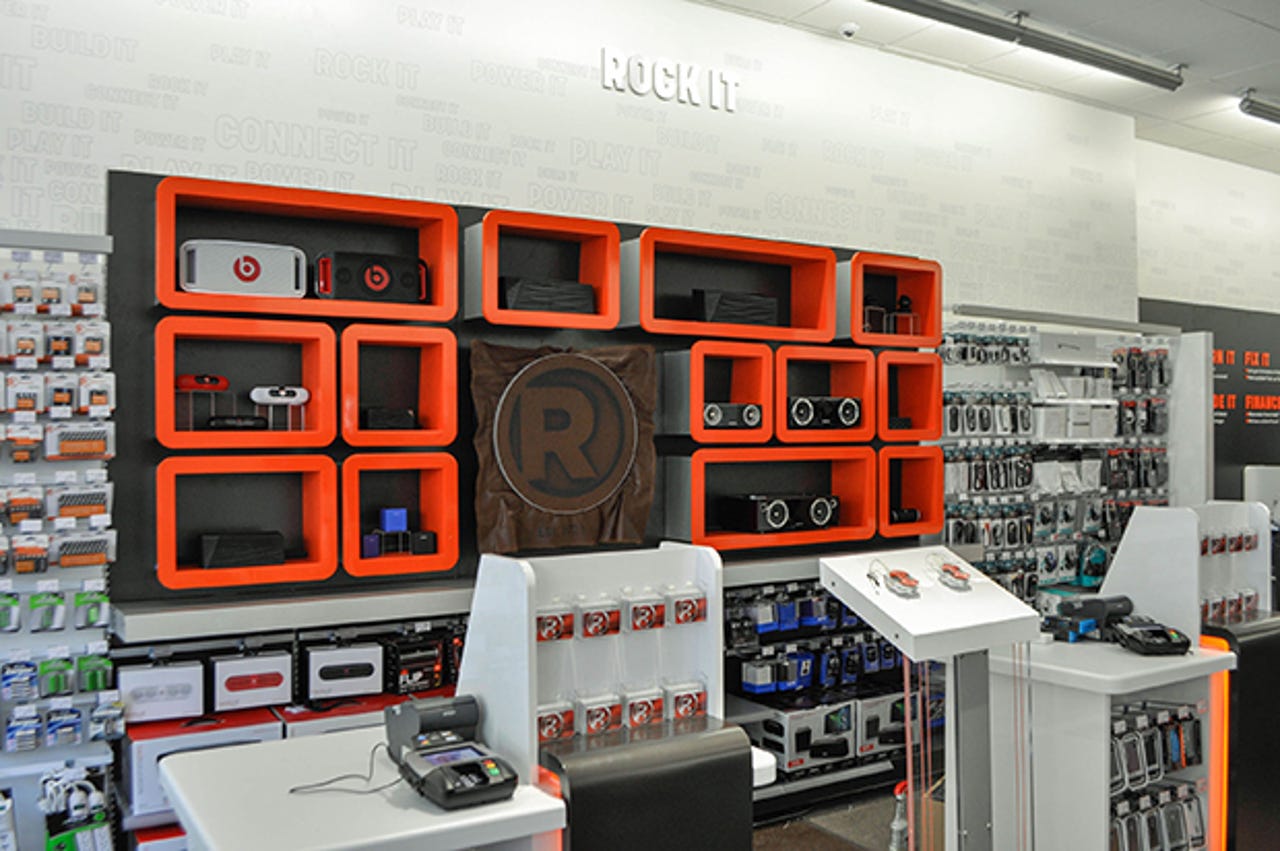Will this new concept store save RadioShack?


RadioShack, the U.S. electronics retailer particularly popular with hobbyists, wants you to know that it has a new brick-and-mortar retail experience.
The new look intends to—fingers crossed!—help the company buck the trend that has decimated its peers Circuit City (R.I.P., at least as a physical entity) and the oft-beleaguered Best Buy.
In the Shack's own words:
The store aims to attract tech-hungry shoppers who will find a new level of products, service and excitement in a store that makes the buying experience fun.
How, you ask? With displays that highlight "in-demand brands like Apple, HTC and Samsung"; arrangements that allow shoppers "to find and compare products, such as a speaker wall; touchscreen devices installed on the floor to "make shopping interesting and playful"; and "helpful, informative staff" to assist customers.
In other words, all the trappings of a modern retail store. (Which makes you wonder what the company was doing beforehand.)
Chief executive Joe Magnacca says the company's goal is to "make our iconic brand relevant to new segments of the consumer market, while reinforcing our commitment to the strong and loyal base of customers who have known RadioShack for many years"—a noble goal for any legacy brand.
The company's fighting an uphill battle, though. It seeks to attract a segment of customers who use brick-and-mortar electronics stores primarily as showrooms for Amazon and who, arguably, enter the store knowing more about the products than the store employees themselves.
RadioShack seems to have avoided meeting the same fate as Circuit City by focusing on what it does best—filling the role as the hardware store of electronic retail, essentially—and keeping square footage and overhead to a minimum. That may be a fine survival tool, but I wonder if it's a real strategy for growth. Especially when so many of the company's products are increasingly sold at retail by their own makers, sometimes with superior buying experiences.
The company's first concept store will open this weekend in the Upper West Side neighborhood of Manhattan, about 50 blocks from ZDNet's New York City headquarters. (More are in the works in New York's metropolitan area, as well as New Jersey and the company's home state of Texas.)
If the effort is successful, the company plans to roll the new design out to all of its 4,300 stores in the U.S. What I'm wondering: for this, how and when do you define success?